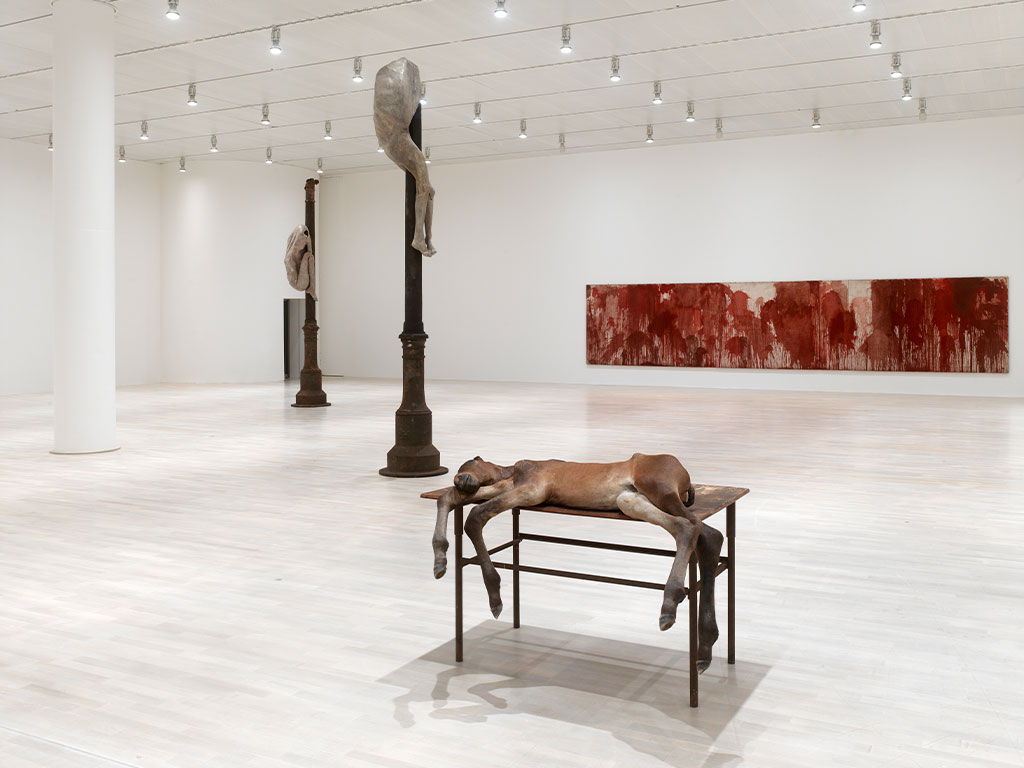The exhibition THE PROBLEM OF GOD explores the multifaceted and ambivalent ways used by contemporary artists to incorporate elements of Christian iconography, which are Omnipresent in our collective visual and textual memory. A remarkable number of these artworks resist a straightforward reading of Christian signs and symbols through complex narratives and images in which the artists engage with Christian motifs and themes in a differentiated and profound manner.
For some years now, there has been talk of a return of the religious in art. Without doubt religion is a theme that can be found everywhere in today’s politics and media – not so much as a theological, but as a socio-political phenomenon. Even outside of the church, Christian ethical values still continue to define views on many social issues in our socio-political system; they are an undeniable part of our culture and history. The focus of the exhibition will be on artworks that reflect critically on Christian images and themes transforming and transposing them by giving them new substance, or by combining them with new visual aesthetic practices.
The themes of these works can range anywhere from life’s existential questions – and philosophical and spiritual challenges – to a humorous and critical engagement with certain aspects of religion and faith, the investigation of certain pictorial traditions in art history, as well as themes relating to today’s society and politics. The works of the exhibition will consist primarily of paintings, drawings, sculptures, photographs, videos and films, as with intellectual appropriation while addressing various aspects and difficulties associated with religious faith. Works by Eija-Liisa Ahtila, Andrea Büttner or Tacita Dean focus on the seemingly boundless realm of the Christian belief in miracles and saint stories. By relying on these as sources for their own stories, they submit them to critical examination while juxtaposing generally accepted views with their own contemporary readings. In contrast, Katharina Fritsch, Katarzyna Kozyra and Thomas Locher reflect certain motifs based on (religious) pictorial models. By referring to the processes of transformation, reproduction and the circulation of commodities to which these motifs are subjected, they analyze the associated mechanisms of generating meaning and identity formation.
Works by artists such as Flavio de Carvalho, Andrew Esiebo, Aernot Mik, Boris Mikhailov and Santu Mofokeng illustrate a socio-political reflection from a broader perspective. well as complex installations – some created especially for this exhibition – from the last 25 years. Selected works represent major directions in art history from 1950 to 1980 and serve as important points of reference for contemporary artworks.A selection of reproductions of images and works of art from The Aby Warburg Institute in London categorized under the keyword “Religious Iconography” will serve as a kind of visual archive, or visual memory, for the works assembled in this exhibition. Aby Warburg, was interested in how certain visual patterns continued to prevail and were continually embodied by new content.
Selected works will be by artists such as Hubert Kiecol, Robert Rauschenberg, Ad Reinhardt and James Turrell. These artists explore how that which cannot be represented or seen can be transformed into something comprehensible through a sublime and transcendental experience. Also included will be works by Francis Bacon, Berlinde De Bruyckere, Gary Hill, Hermann Nitsch, Paloma Varga Weisz and Bill Viola, who address the material and deeply existential aspects of the (Christian) experience of suffering, pain and passion, primarily by drawing on art historical tradition. Artists such as Francis Alÿs, Michaël Borremans, Harun Farocki and Rosemberg Sandoval concentrate on certain aspects of Christian rituals, relocating these in new contexts of meaning. On the other hand, conceptual and humorously critical works focusing on the relationship between word and image by artists such as Georges Adéagbo, Pavel Büchler, Paul Chan, Douglas Gordon, Emma Kay, Kris Martin, Little Warsaw and Danh Võ engage.

